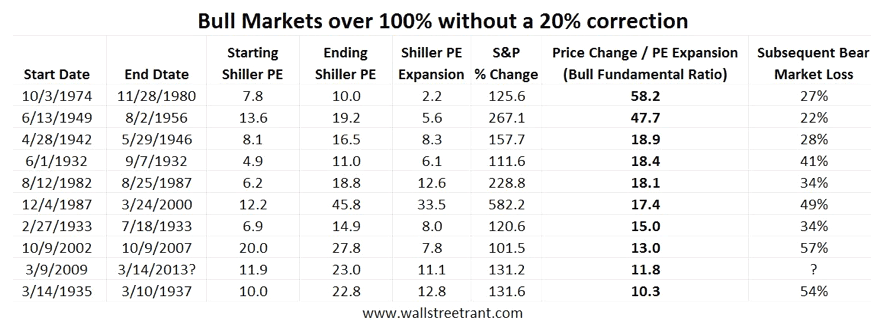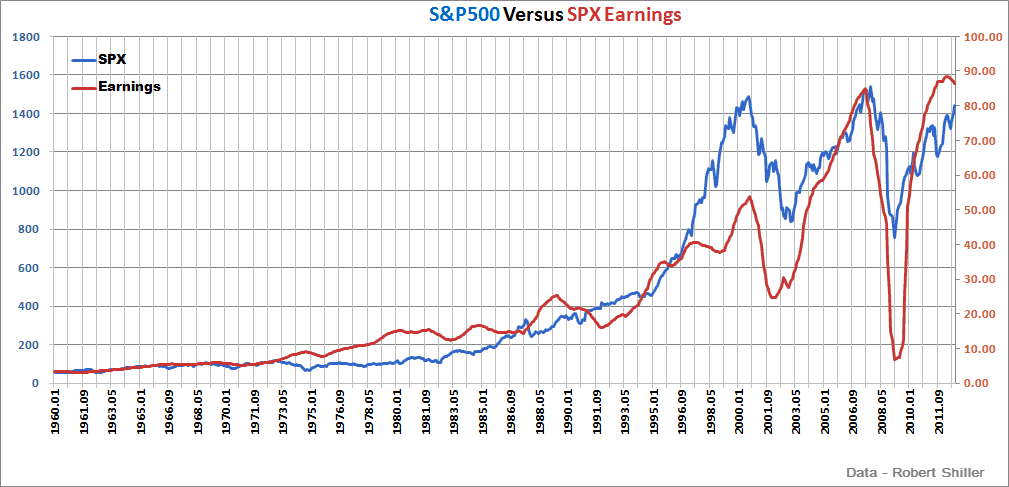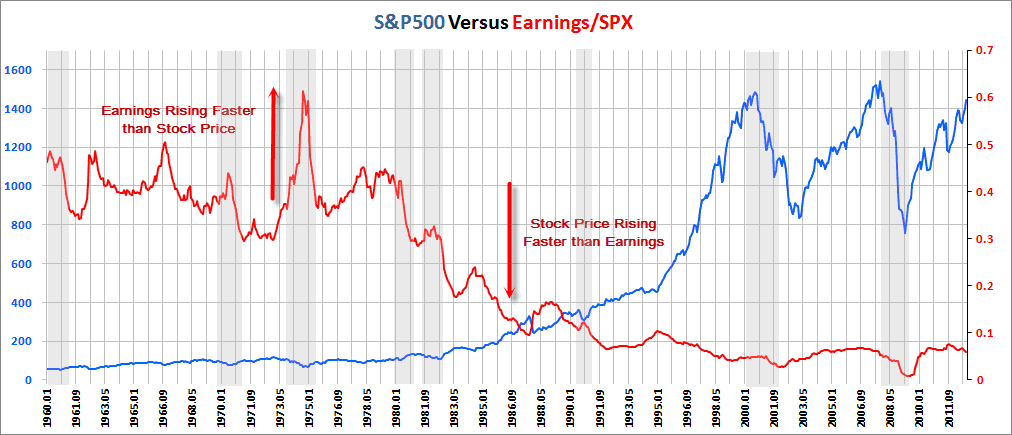


During the 1982-2000 bull market, investors were more optimistic about the future of stocks -- earnings appeared to matter less. Earnings grew relative to stock prices during the 1987 bear market and more modestly from 1992-95. But other than brief periods in 2001-02 and 2008-09, stock prices appreciated well ahead of earnings for most of this period. But this euphoria came at a cost.
What is evident from Figure 3 is that the "irrational exuberance" in the 1990s caused stock prices to rise more quickly than earnings, an emotion for which investors paid in 2001-02 with a correction of nearly 50%. Evidence suggests that investors did not appear to have learned their lesson in the 2003-07 bull market. It was associated with an even greater disconnect in which stock prices were bid up well above earnings followed by an even more severe bear market drop.
What should concern traders and investors is that the 2009 bull market has so far demonstrated weaker fundamental growth, as evidenced by P/E expansion of 11.1 (thus far). If the data in Figure 1 proves a reliable guide, this puts us on track for a 50%+ correction when the euphoria finally subsides. This view is further substantiated by the 1935-37 bull, which experienced levels of government stimulus similar to what we have had recently. Stock prices in the late 1930s were pushed up to unsustainable levels and a very painful correction in excess of 50% followed.
No comments:
Post a Comment